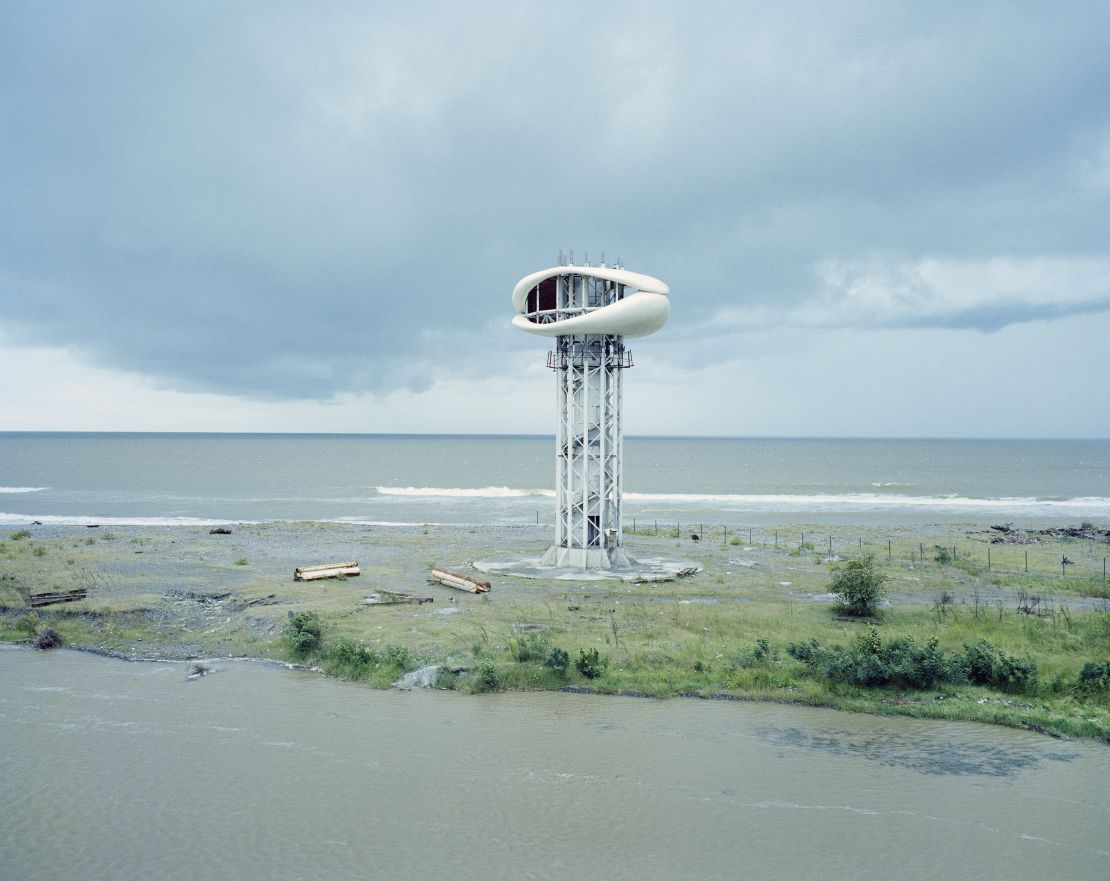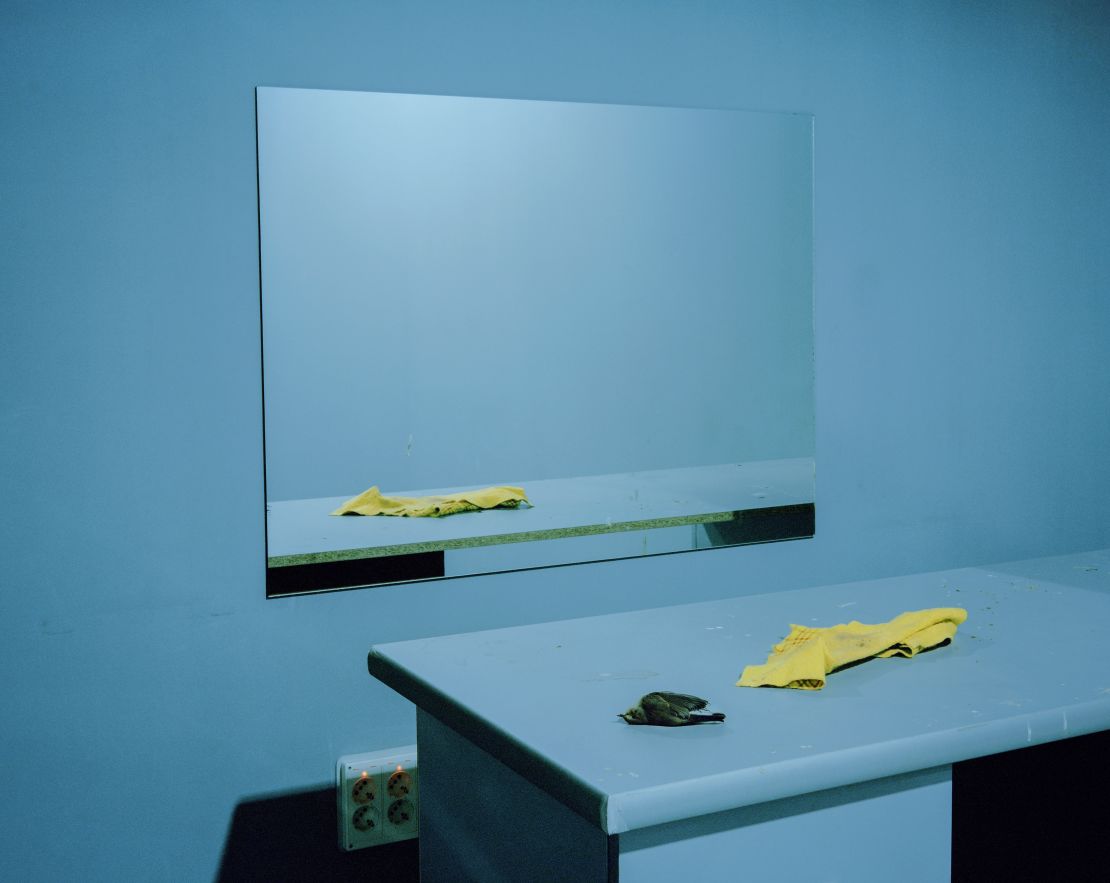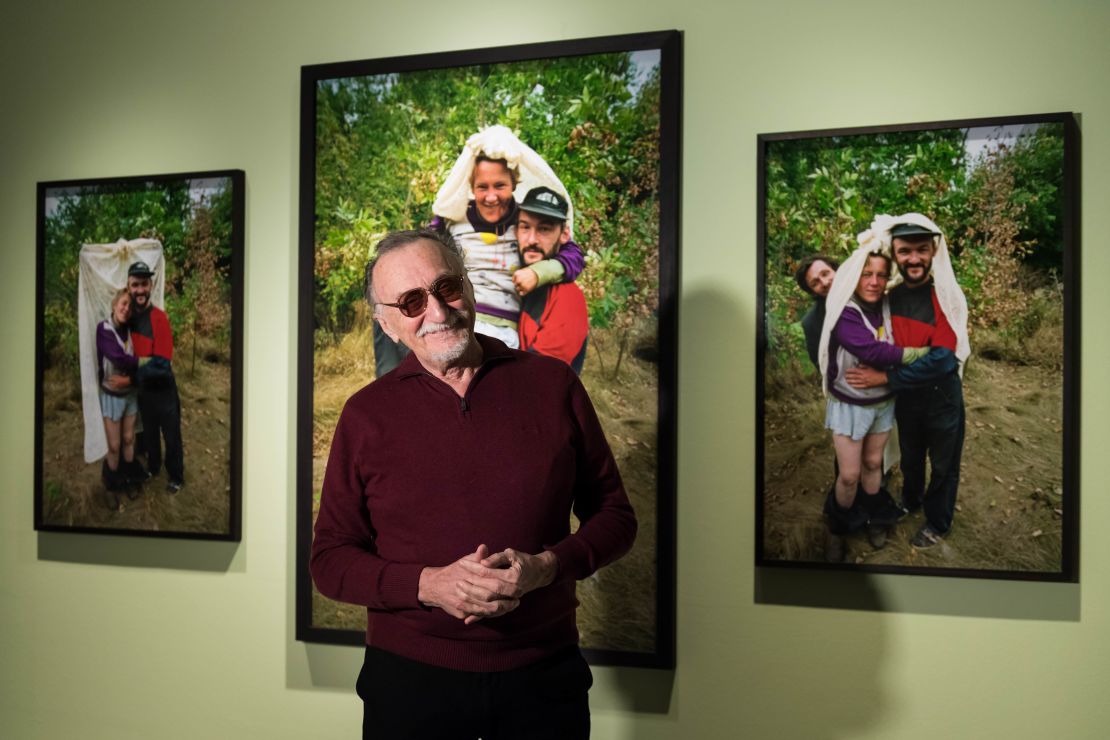The six characters captured in documentary photographer Max Pinckers’ new book make up some of the most controversial people in U.S. news, best known for bending the boundary between reality and fantasy.
During a six-month cross-country road trip in 2016, Pinckers photographed a real-life superhero with hooks for hands, a serial imposter who commandeers trains and buses, and a holocaust survivor whose invented tale of love in concentration camp won Oprah’s heart.
You might recognize some, too: like the family of “Balloon Boy,” the six-year-old from Colorado who gained rolling news coverage in 2009, when he reportedly floated away in a home-made helium balloon (he was later found hidden in the family’s attic); or Rachel Dolezal the former NAACP leader who had been presenting as black for years before her parents revealed in 2015 that she was born white.
Pinckers, a one-time member of the Magnum photo agency, said he set out to discover if it is possible to photograph this “hyper-individualized” new era in America, where people like Dolezal have created an internal reality that is entirely at odds with what the rest of the world sees.
Max Pinckers' "Margins of Excess"
Seated in the corner of a dimly lit pub in London, Pinckers, an eager 29-year-old, asked: “How can we make images that are based on imagination or fantasy, and still use them in a form of storytelling that contains some form of truth?”
He is one of a radical new generation of documentary photographers who is beginning to use taboo tools like theatrical staging, manipulation of images and context, and outright fictions, to tell these stories that straighter photographers struggle to communicate.
His book, “Margins of Excess,” contains no captions that will tell you what is real and what is fake, creating an uncanny collage of real portraits, actors playing out scenes seen in newspapers, strange dogs cloned by the U.S. military, and a few UFOs.
In an age when billions of new pictures are snapped each day, and many wind up edited or misrepresented online, many of these new documentarians are asking if we need to wholly flip the old maxim that the camera never lies.
‘Post-truth’ photography

Two new photography exhibitions in London pry into documentary photography’s complicated relationship with truth and authenticity. At the Photographers’ Gallery, the shortlist for this year’s Deutsche Börse Photography Foundation Prize, the prestigious award for European photography, includes photographers who take on social and political issues, but share Pinckers’ questions about how their work represents the reality of world beyond.
Rafal Milach’s images of the architectural fantasy worlds built by leaders in post-Soviet countries are juxtaposed alongside perception-distorting objects designed to challenge viewers spatial imagination. Milach, previously an official press photographer in Belarus, said he strove to take pictures that would satisfy his government handlers, while still communicating the fakeness of these guided photo tours to everyone else.
The grandiose buildings he photographed, such as the Zaha Hadid-designed Heydar Aliyev Center in Baku, Azerbaijan, are shallow, film-set facades, he said, designed to put a progressive face to repressive regimes.
“The entire show is a lot about perception and knowing: the context, what we see, what we don’t see,” Milach said.

Speaking at the opening of the exhibition, curator Anna Dannemann said all four members of the shortlist wanted to ask how ideas of power and truth are produced in photographs, with many responding the erosion of trust in images, as well as in news sources and figures of authority.
“We are in this post-truth era, and so photography can never be perceived as truthful any more, with all the Photoshop and all these things we know about,” Dannemann said. “What is shared more than anything is a question: of what the image is, now, and how does it relate to reality?”
The death of authenticity?
“Another Kind of Life: Photography on the Margins” at the Barbican Art Gallery, which charts photography of marginalized groups since the ’60s, makes a case for one type of authenticity. Starting with black-and-white portraits of circus performers by Diane Arbus, it spins a thread through sexual and social subcultures documented by the likes of Bruce Davidson, Larry Clark and Pieter Hugo.
But exhibition curator Alona Pardo said even photographers who have strived to capture reality have long toyed with the “exchange” between photographer and subject, inserting themselves into the stories they’re trying to tell, and adding elements of their own invention.
Pardo said that, for many, such as Danny Lyon, who immersed himself in the world of outlaw bikers in the 1960s, it was a “bit like method acting,” getting the ideal image through living it, like the New Journalists who inspired him.
“Where do you draw the line?” she asked. “There isn’t one way of doing it.”
In one striking room, Ukrainian-born Boris Mikhailov, one of the key documentary photographers from the former Soviet Union, displays his sequence “The Wedding,” which shows three homeless people role-playing a matrimonial scene.

Vividly colorful, flashing naked flesh, and hard to look at, the sequence rejected the stoic fly-on-the-wall black-and-white photography that is often used to depict the homeless, which the photographer believes renders them invisible. The fictional elements, he said, shake us from our usual apathy.
“I think it only feels more contemporary: this is life now,” said Mikhailov, 79, who photographed marginalized people under communism and in the years of economic chaos following its downfall.
“This is a method for breaking the normal life. And after you’ve broken the normal life, you understand life in a different way. More exactly.”
“Another Kind of Life: Photography on the Margins” is on at the Barbican Art Gallery in London until May 27, 2018.
“Deutsche Börse Photography Foundation Prize 2018” is on at the Photographers’ Gallery in London until June 3, 2018.
“Margins of Excess” by Max Pinckers is out now.












